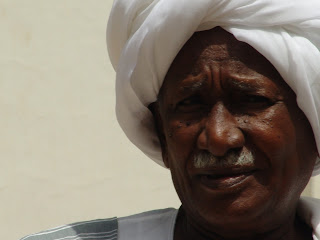In an interview on Friday aired simultaneously by Sudan’s three major television stations President Bashir stated that Sudan was now closer to war than to peace with South Sudan. The declaration follows on the collapse of the recent round of negotiations between the two countries over oil transit fees. The details of the row are well documented in the media, and have provided rich material for analyses and forecasts. In brief, Khartoum started to confiscate a share of the South Sudanese oil flowing through the northern pipeline and then seized shipments of the oil in Port Sudan in lieu of transit fees still to be agreed upon between the two countries. In response, South Sudan halted its oil production altogether. Presidents Kiir and Bashir met in Addis Ababa at the helm of the negotiation teams but failed to reach an agreement. Temporary arrangements suggested by the African Union High-Level Implementation Panel (AUHIP) and the Ethiopian Premier Meles Zenawi were reportedly accepted by President Bashir but rejected after some hesitation by President Kiir. South Sudan’s top negotiator, Pagan Amum, made it clear that only a comprehensive deal on all pending post-secession issues would satisfy his government. He demanded the transfer of Abyei and five other contested border areas to South Sudan as a condition for the resumption of oil production and export through (North) Sudan. With this announcement the impasse seemed to be insurmountable and war between the two states more or less inevitable. This, in general terms, is the standard reading of last month’s developments.
In terms of risk assessment the scare of a full-scale war is obviously justified. The contention, however, is that Sudan and South Sudan are already at war. The Sudan Armed Forces (SAF) clashed several times since the secession of South Sudan with the Sudan People’s Liberation Army (SPLA) in Abyei, and continue to fight the SPLA in South Kordofan and the Blue Nile, since the secession of South Sudan an officially separate force. Almost the entire border between Sudan and South Sudan is in fact a war zone. The transition to an officially acknowledged state of war, if it does take place, will not be a qualitative shift in relations between Juba and Khartoum but an extension of the current state of affairs. Arching further back one could argue that the the interim period of the Comprehensive Peace Agreement (CPA), from 2005 to 2011, was just that, a peace break on the calendar of Sudan’s wars. To grasp why partition could not deliver the promised peace it is necessary to investigate once more the premises of partition, and the nature of the forces that presided over it. The rulers of Khartoum and Juba founded their separate kingdoms on the notion of an immutable contradiction between North and South, grounded in the differences of race, culture, religion and so forth. The same notion serves them well today as they attempt to tame the forces threatening their hegemony. In that sense, their failure to agree on a mutually beneficial arrangement to share the only resource at their disposal, irrational as it is, reflects a political rationale of the first order. To survive Khartoum and Juba need to disagree, the more suicidal the confrontation seems to be the better. Cooperation, by its mere occurrence, would rob both regimes of the very foundation of their rule, the liberation championed by the Sudan People’s Liberation Movement (SPLM) and the ‘good riddance’ claim marketed by the National Congress Party (NCP).
The Sudanese, on both sides of the 1956 border, are held hostage to this ideological ambience rooted in the history of the north-south encounter. To overcome this closure it is necessary to dispel the mystifications of national identity propagated by Khartoum and Juba in favour of a unity of purpose that heals the fractured corpus of the dispossessed but cuts through the presumed organic unity of each nation. This is the post-secession issue proper.




No comments:
Post a Comment